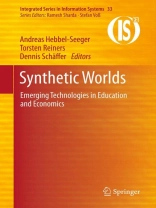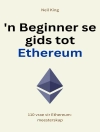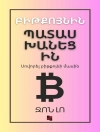Synthetic Worlds, Virtual Worlds, and Alternate Realities are all terms used to describe the phenomenon of computer-based, simulated environments in which users inhabit and interact via avatars. The best-known commercial applications are in the form of electronic gaming, and particularly in massively-multiplayer online role-playing games like World of Warcraft or Second Life. Less known, but possibly more important, is the rapid adoption of platforms in education and business, where Serious Games are being used for training purposes, and even Second Life is being used in many situations that formerly required travel.
The editors of this book captures the state of research in the field intended to reflect the rapidly growing yet relatively young market in education and business. The general focus is set on the scientific community but integrates the practical applications for businesses, with papers on information systems, business models, and economics.
In six parts, international authors – all experts in their field – discuss the current state-of-the-art of virtual worlds/alternate realities and how the field will develop over the next years. Chapters discuss the influences and impacts in and around virtual worlds. Part four is about education, with a focus on learning environments and experiences, pedagogical models, and the effects on the different roles in the educational sector. The book looks at business models and how companies can participate in virtual worlds while receiving a return on investment, and includes cases and scenarios of integration, from design, implementation to application.
Jadual kandungan
TÜV Nord in 3D: Avatars at Work | From Second Life to the Web 3D.- How Linden Lab Built a Virtual World for Business and Education.- Transforming Ideas to Innovations: A Methodology for 3D Systems Development.- Second Life as a Social Experiment.- Social Navigation for Learning in Immersive Worlds.- 3D Digital Environments for Virtual Teams.- Second Life as a Virtual Lab Environment.- Taking the Distance out of Learning for Students through a Virtual World.- Pedagogical and Psychological Impacts of Teaching and Learning in Virtual Realities.- Virtual World-Building: Implications for Education and Training.- Game-based Elements to Upgrade Bots to Non-Player Characters in Support of Educators.- Collaborative Learning in Virtual Environments.- Business Meets Community in Virtual Berlin.- Supporting Diverse Needs of Learning Groups: Towards Highly Flexible Learning Settings in Collaborative 3D Virtual Environments.- Transforming Ideas to Innovations: A Methodology for 3D Systems Development.












